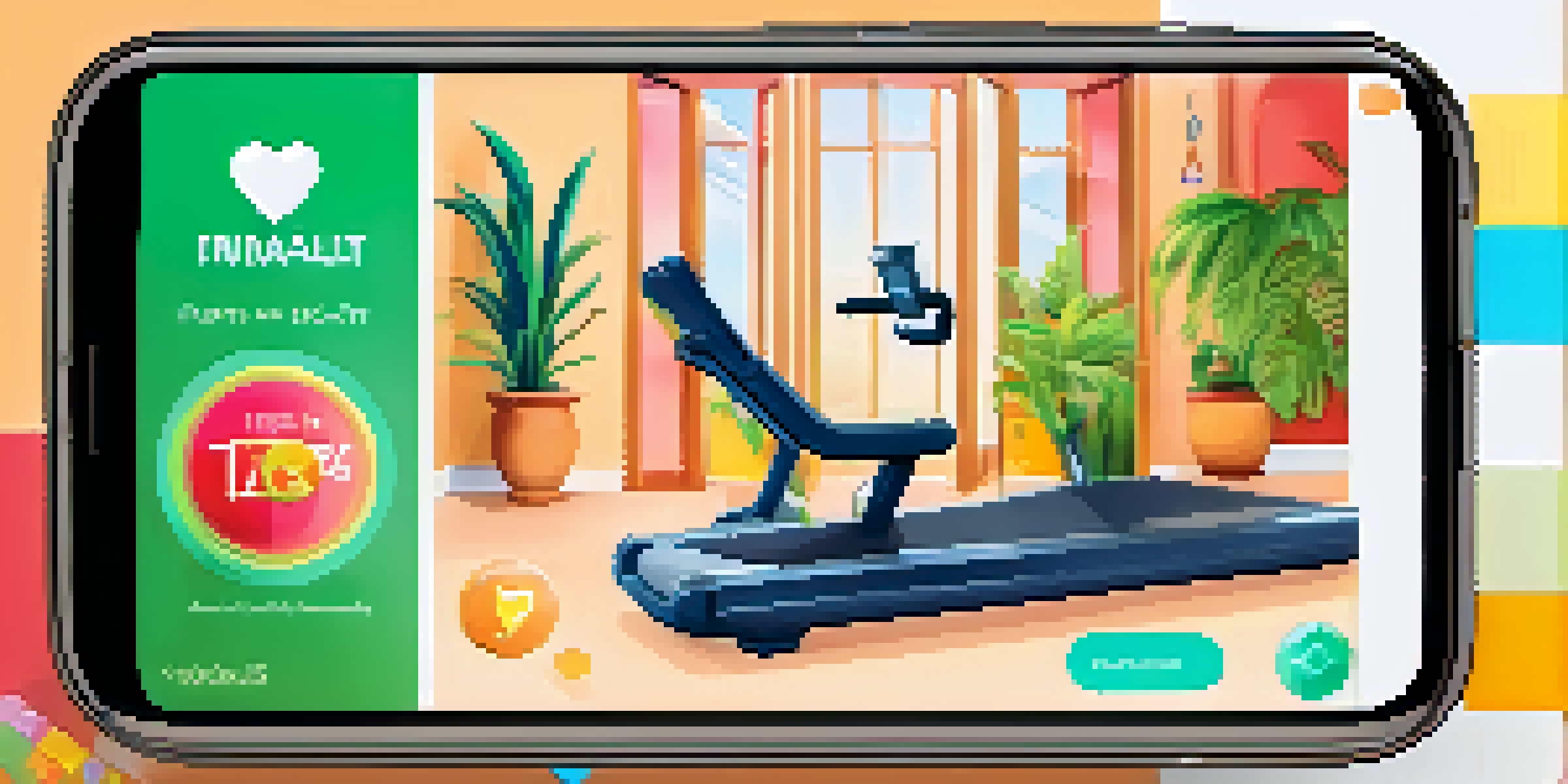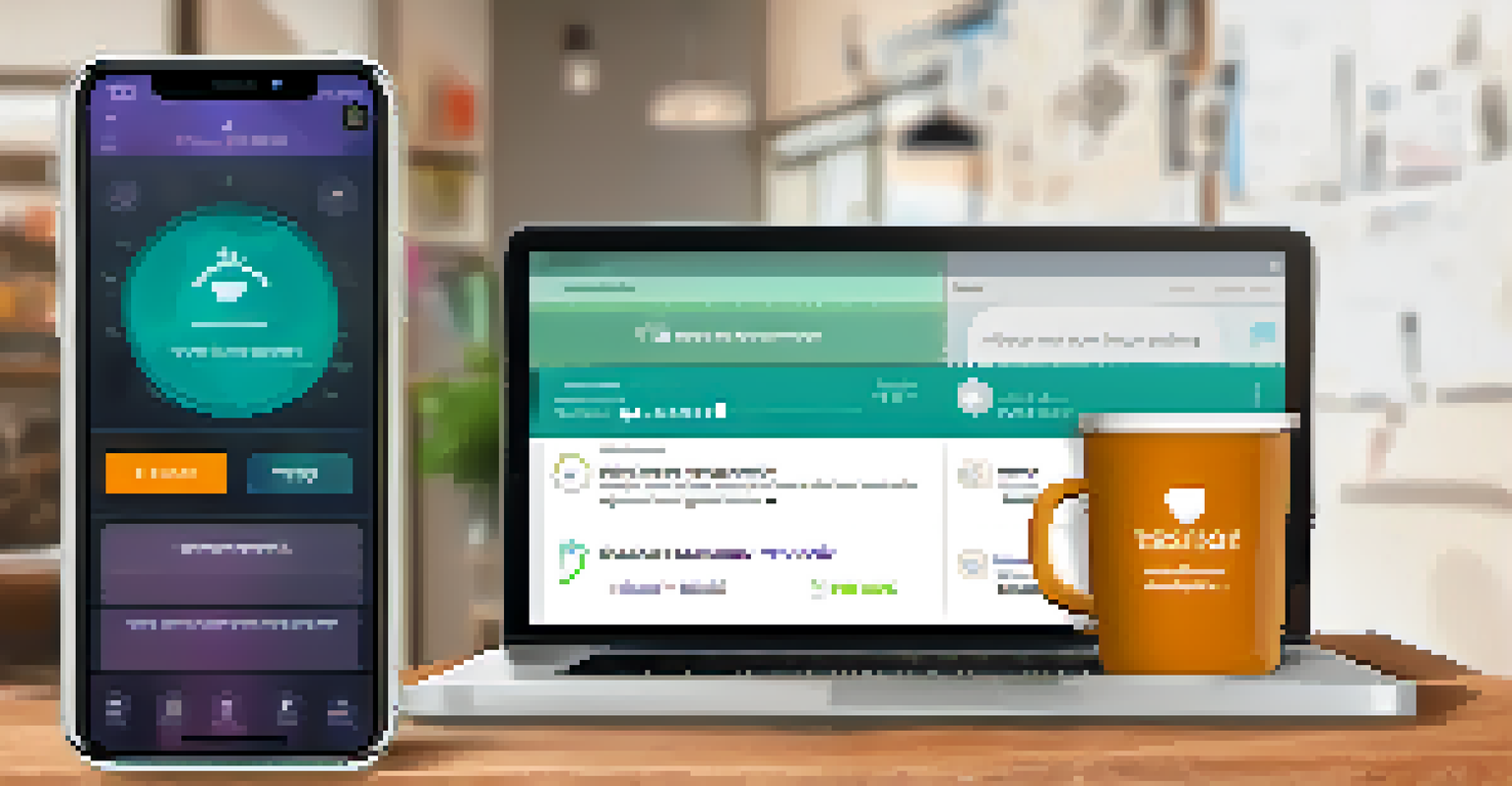Gamification Techniques to Boost Patient Engagement Efforts

Understanding Gamification in Healthcare
Gamification refers to the application of game-like elements in non-game contexts, such as healthcare. This strategy aims to motivate individuals by incorporating fun and engaging activities into their health journeys. By making the process more enjoyable, patients are likely to participate more actively in their care.
The greatest danger in times of turbulence is not the turbulence; it is to act with yesterday's logic.
In the healthcare landscape, gamification can take many forms, from mobile apps that track health metrics to rewards systems for completing health tasks. These elements not only encourage participation but also help patients stay informed about their health in a more interactive way. It's like turning routine health maintenance into a game where every small victory counts!
Ultimately, the goal of gamification is to foster a sense of achievement and motivation among patients. By creating an environment where health management feels rewarding, healthcare providers can enhance patient engagement significantly.
Incorporating Points and Badges for Motivation
One of the most effective gamification techniques is the use of points and badges. These elements create a sense of accomplishment that can motivate patients to engage with their health goals. For instance, a fitness app might award users points for each workout completed or badge for reaching a milestone, encouraging continued participation.

This technique not only fosters competition but also builds a community among users. When patients see their friends or peers earning badges, they may be inspired to push themselves further. It’s like being part of a team where everyone celebrates each other's progress.
Gamification Boosts Patient Engagement
By incorporating game-like elements into healthcare, patients are motivated to actively participate in their health journeys.
Moreover, the visibility of achievements can lead to healthier behaviors. Patients are more likely to stick to their treatment plans and make lifestyle changes when they see tangible rewards for their efforts.
Challenges and Quests to Encourage Participation
Challenges and quests are another engaging way to boost patient interaction. By setting specific health-related challenges, healthcare providers can inspire patients to take action. For example, a '30-Day Step Challenge' can motivate patients to increase their physical activity while having fun.
Games can be a powerful tool for engagement, motivation, and learning, and this is especially true in healthcare.
These challenges can be personalized to fit individual patient needs, making them more relevant and engaging. When patients face a challenge that resonates with their goals, they are more likely to participate wholeheartedly. It’s similar to training for a race; having a goal can make the process much more exciting.
Additionally, introducing friendly competition among participants can spark further engagement. Patients may feel more driven to achieve their goals when they know others are on the same journey, making it a collective effort.
Interactive Feedback to Foster Improvement
Providing interactive feedback is essential in the gamification process. Patients thrive on knowing how they are doing, and timely feedback can keep them motivated. For instance, health apps that provide instant updates on progress can help patients understand their achievements and areas for improvement.
This feedback loop creates an engaging experience where patients feel more involved in their health journey. Think of it as having a personal coach who cheers you on while also guiding you to do better. It reinforces positive behavior and encourages patients to stay committed to their goals.
Personalization Enhances Experience
Tailoring gamified experiences to individual patients based on their preferences significantly increases their connection and engagement.
Moreover, incorporating elements like leaderboards can add an extra layer of motivation. Patients can see where they stand compared to others, which can inspire them to push their limits.
Social Elements to Build a Supportive Community
Incorporating social elements into gamification can significantly enhance patient engagement. Patients often benefit from sharing experiences and challenges with others facing similar health issues. By creating platforms for discussion, healthcare providers can foster a sense of community.
These social interactions can take the form of forums, chat groups, or even team challenges. When patients share their journeys, they can provide support and encouragement to each other. It’s like having a buddy system that not only motivates but also makes the experience less daunting.
Additionally, social sharing can amplify the gamification effect. When patients post their achievements on social media or within a community platform, it can inspire others to join in, creating a ripple effect of engagement.
Personalization for Enhanced Patient Connection
Personalization is a crucial factor in successful gamification strategies. Tailoring experiences to individual patients based on their preferences and health data can significantly boost engagement. For example, health apps that adapt challenges to a patient's fitness level or interests can create a more relatable experience.
When patients feel that their unique needs are considered, they are more likely to engage with the gamified elements. It’s akin to wearing a custom-made suit; it fits perfectly and feels good, encouraging the wearer to shine.
Measuring Success Improves Strategies
Tracking metrics like participation and health outcomes helps healthcare providers refine gamification approaches for better patient involvement.
Moreover, personalized experiences can lead to better health outcomes. When patients are invested in a program that resonates with them, they are more likely to stick with it and achieve their health goals.
Measuring Success: Metrics for Engagement
To ensure the effectiveness of gamification techniques, it’s essential to measure success through specific metrics. Tracking patient participation, retention rates, and health outcomes can provide valuable insights into what works and what doesn’t. For example, if a challenge sees high participation but low completion rates, it may need adjustments.
Additionally, collecting feedback from patients can help refine gamification strategies. Understanding the patient experience can lead to improvements and innovations that keep the program fresh and engaging. It’s like tuning an instrument; regular adjustments can lead to a harmonious outcome.

Ultimately, these metrics can guide healthcare providers in creating more effective and engaging gamification strategies. By continuously evaluating and evolving their approaches, they can enhance patient engagement over time.
Future Trends in Gamification for Patient Engagement
As technology continues to advance, the future of gamification in healthcare looks promising. Emerging trends like virtual reality (VR) and augmented reality (AR) offer exciting opportunities to create immersive experiences for patients. Imagine patients using VR to simulate healthy lifestyle choices or engage in therapeutic exercises in a virtual environment.
Moreover, artificial intelligence (AI) can personalize gamification strategies even further by analyzing patient data and offering tailored recommendations. This could revolutionize how patients interact with their health, making it more engaging and effective. It’s like having a personal assistant that knows exactly what motivates you.
In conclusion, the integration of innovative technologies will likely play a pivotal role in enhancing patient engagement through gamification. As these trends unfold, healthcare providers have the chance to create even more compelling and effective experiences for their patients.